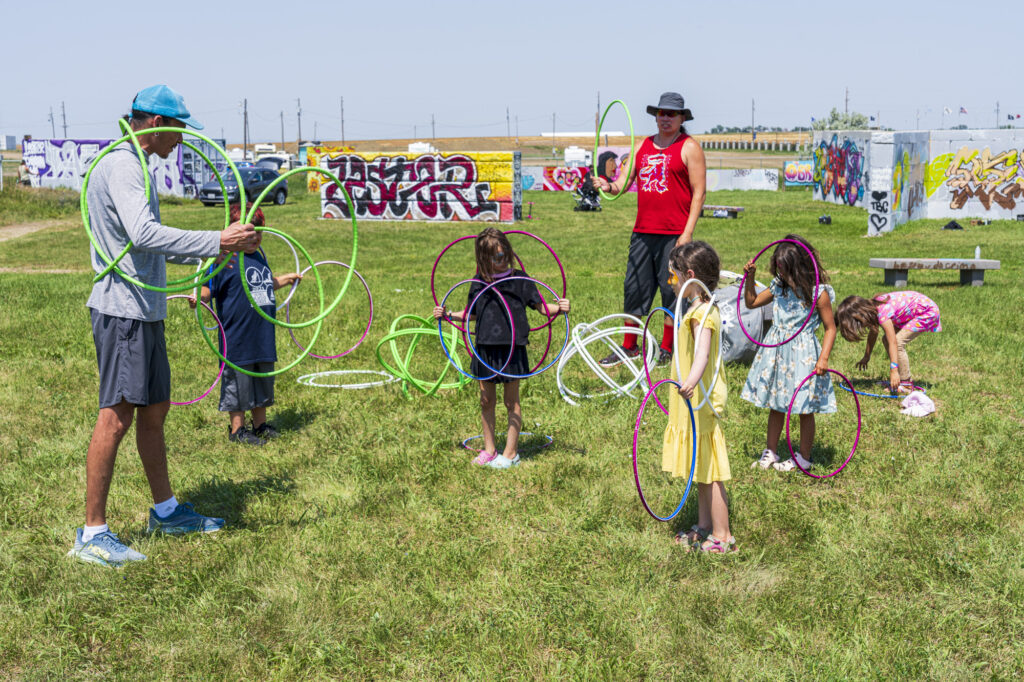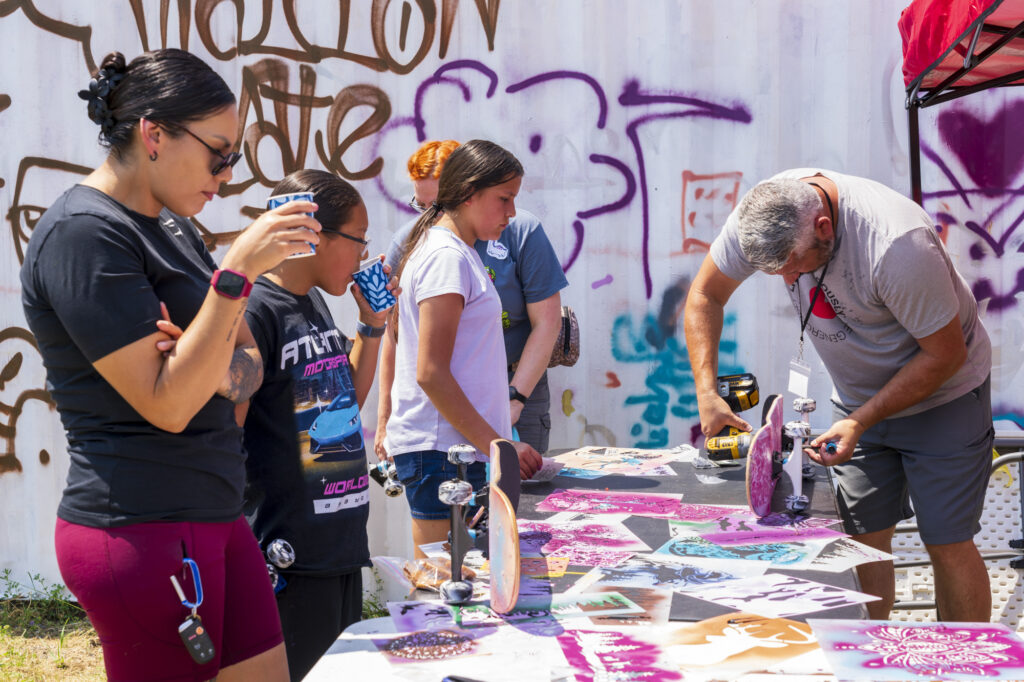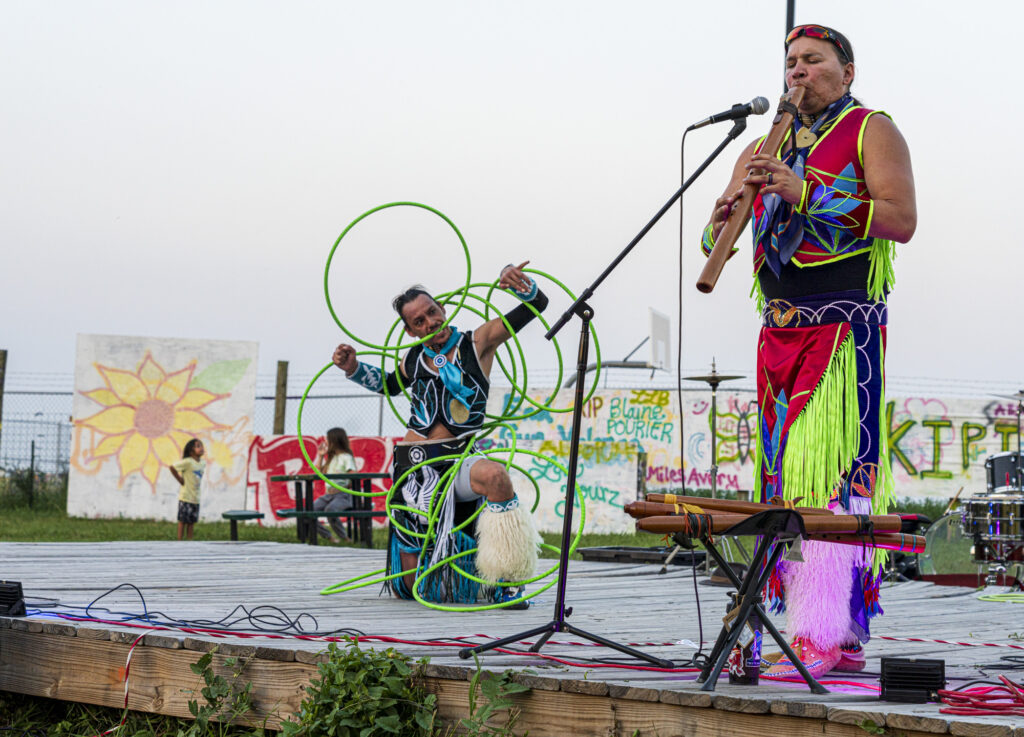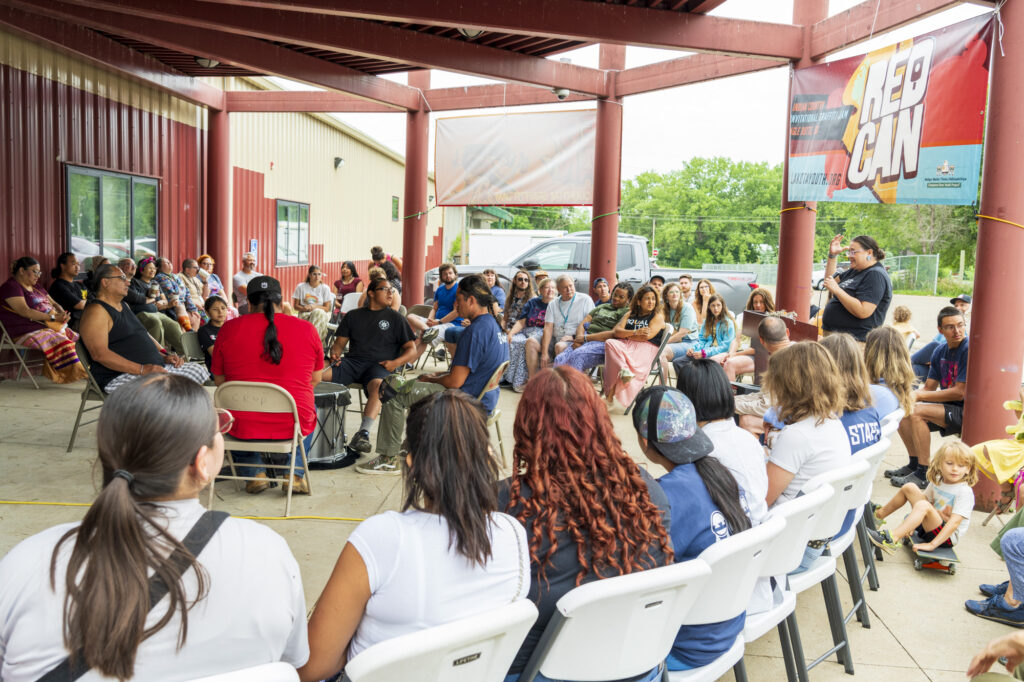On the five-acre campus of the Cheyenne River Youth Project (CRYP), a unique, community-wide graffiti art event—the first and only in Indian Country—aims for more than just the walls. Located in Eagle Butte, South Dakota, on the Cheyenne River Reservation (one of nine Native Nations in the state), the organization has focused on providing youth with opportunities to get creative, develop healthy habits, work together, and learn new skills since its inception in 1988.
Executive Director Julie Garreau, who has been with CRYP since the beginning, is no stranger to balancing numerous aspects of the program. On the day Garreau spoke to me from her office, she and the CRYP team were preparing to welcome artists from around the nation—and this year, New Zealand—to kick off the tenth annual RedCan Graffiti Jam.
JULIE GARREAU“[RedCan Graffiti Jam] a risky kind of project to initiate, but I feel like with CRYP we really understand kids, and you’ve got to take some risks sometimes to keep them interested and motivated and you have to do things very differently.”






Far more than just an art showcase, RedCan promotes collaboration and community initiatives through pairing artists with teen interns of a CRYP Lakota Art Fellow. “CRYP created the Lakota Art Fellowship in 2019 so it could provide opportunities for teens on the Cheyenne River Sioux Reservation who have an interest in pursuing careers in the arts, and who have completed multiple internships through the nonprofit youth project’s dedicated art institute,” says communications director Heather Steinberger.

An Evolving Event
Garreau remembers RedCan as “a risky kind of project to initiate, but I feel like with CRYP we really understand kids, and you’ve got to take some risks sometimes to keep them interested and motivated and you have to do things very differently.”
Starting with the evening they arrive, the artists enjoy a traditional Lakota meal of buffalo soup, wojapi (a berry sauce), and fry bread. The four-day event, which includes performances, skateboard painting, music, and community meals, serves to not only engage but keep kids’ attention while celebrating Lakota identity and culture.
This year, buildings in the mural lineup included the animal shelter, veterans building, radio station, and food pantry. Garreau takes time to discuss with the artists what the buildings are used for and their history within the community. Murals are also installed in the Waniyetu Wowapi Art Park, an open-air space where a series of wooden panels, shipping containers, and walls host constantly revolving graffiti compositions.
Returning artists include, among many others: East, an artist of Cherokee descent from Denver; CYFI, a Yaqui and Azteca artist from Minneapolis; and Natasha Martinez, a.k.a. Rezmo, a Diné and Mexicá artist currently living in the Salt River Pima-Maricopa Indian Community in Arizona. New to the event this year are Māori artists Phat1 and Lady Diva, from Aotearoa (New Zealand); Midwestern artist Brady Scott; and Kansas-born Ponca artist Amp.

Celebrating Connections
Rezmo had just arrived in Eagle Butte when in an email she wrote, “What I look forward to the most this year is painting in the community and making connections with the community members that come out and talk to us throughout the week.” At home in Arizona, she works in youth services and teaches art to kids ranging from pre-K age to teens, so partnering up with interns and young artists at RedCan sparks her energy. “It makes me happy to teach them and share what I know,” she says.
Garreau relates a story she heard from artist Hoka Skenandore, a Lakota artist who painted a mural spelling “Lakota” in both the Lakota language and in sign language, depicting each letter in hands of varying skin tones. “He said, this little boy came up to him and was watching him for a while,” Garreau shares. “Then the little boy went up to the mural and put his hand on the wall. And he said, ‘Huh, just like me.’ That’s the other part of this, right? Seeing yourself in these spaces and knowing that you are part of this, you know that this is for you—for us.”
